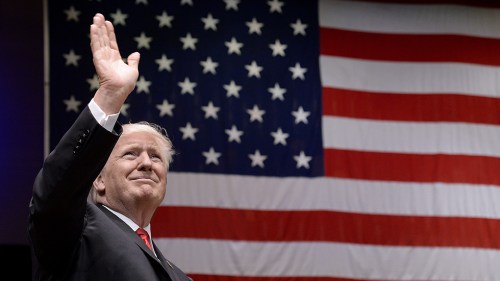GOP-leaning polls trigger questions about accuracy
The prevalence of Republican-leaning polls in recent weeks is raising questions about their effect on the overall polling average as the presidential race between Vice President Harris and former President Trump tightens even further.
Surveys from pollsters that lean toward one party are a regular occurrence in presidential contests along with independent polling.
In recent weeks, however, GOP-leaning polls have flooded the zone, fueling speculation that they could be skewing perceptions of the race. But experts note their average models have methodologies in place to prepare for this.
“When you look across all the averages, the net effect is less than a point, if you take out the Republican polls, or the partisan ones, so to speak,” said Scott Tranter, the director of data science for Decision Desk HQ. “So I don’t necessarily think it’s a huge thing there.”
Across the board, election models and polling averages consider the race almost neck and neck without a clear leader. The Hill/Decision Desk HQ model has the race as almost exactly even in each candidate’s chance to prevail.
In FiveThirtyEight’s simulations of 1,000 possible outcomes, Trump wins in just more than 500 of them, a bit ahead of Harris. Pollster Nate Silver has Trump just ahead in likelihood of winning, still in line with other models.
Polling in general has been picking up as Election Day approaches — and in particular surveys from Republican-affiliated firms. Various averages include several polls from Republican-leaning pollsters or with Republican-leaning sponsors but not as many from Democratic-leaning pollsters.
This has raised the question of whether these GOP-leaning polls are to explain for why the race is tightening even more so with Trump seeming to make slight gains nationally and in key swing states.
Tranter said these Republican partisan polls are having a minimal effect on the averages.
He said Decision Desk HQ doesn’t weigh polls based on party associations. Polls that are most recent are given more weight than older ones, and sample size and meeting “basic requirements” are taken into consideration, but otherwise polls are treated the same way.
Tranter acknowledged that if the Republican-leaning pollsters were finding better results for Trump, the average would be more affected, but he noted that Decision Desk HQ’s model gives Harris a slightly better chance at winning than others that include a weighting system to limit the effect of partisan polls.
Silver’s model, for example, has Harris as the slight underdog but does weigh polls based on pollster quality and bias.
An elections analyst for Silver rejected the idea of GOP-leaning polls having much influence on the average in a post Wednesday, noting that Harris led by 3 points nationally in the overall average, while her lead shrunk to 2 points with just Republican-aligned pollsters. Taking them out, her lead increased to 3.4 points.
But the analyst said the weighing system prevents partisan polls from skewing the average, causing most models to roughly have the same averages on the national and state level, generally with differences within 1 percentage point.
Tranter also noted that not all GOP-leaning polls present good news for Republicans, pointing to internal polls from the Senate Leadership Fund, a super PAC that works to elect Republicans to the Senate, which showed several GOP candidates trailing their Democratic opponents in key states that the party has expressed high hopes for.
He said the impulse to consider the effect of partisan polls is a “reaction to the reaction,” with various media outlets reporting on good polls for one side or new surveys that move the average.
“In a way, the polls are doing their job right,” he said. “They’re getting the media to talk about a potential movement here.”
But Tranter said he ultimately expects the polling for the race will appear mostly similar right before Election Day to how it currently looks and has looked throughout much of the race. He noted that Decision Desk HQ’s model has “inched” Harris’s probability of winning down from 53 percent to 50 percent over the past two months, which is measurable, but “it’s still essentially a coin flip.”
The closeness of the race is why these slight changes are seen as notable, Tranter said.
“My take on it now is neither candidate should be surprised if they win or lose,” he said.
Copyright 2024 Nexstar Media Inc. All rights reserved. This material may not be published, broadcast, rewritten, or redistributed..



















